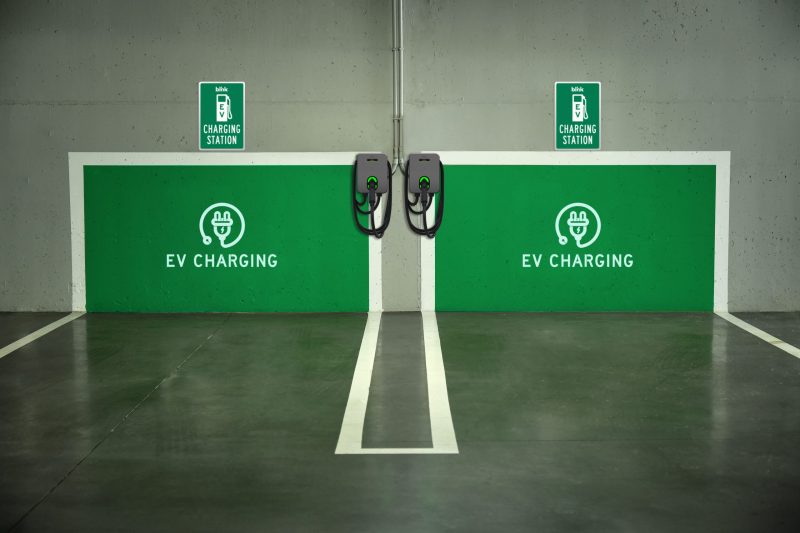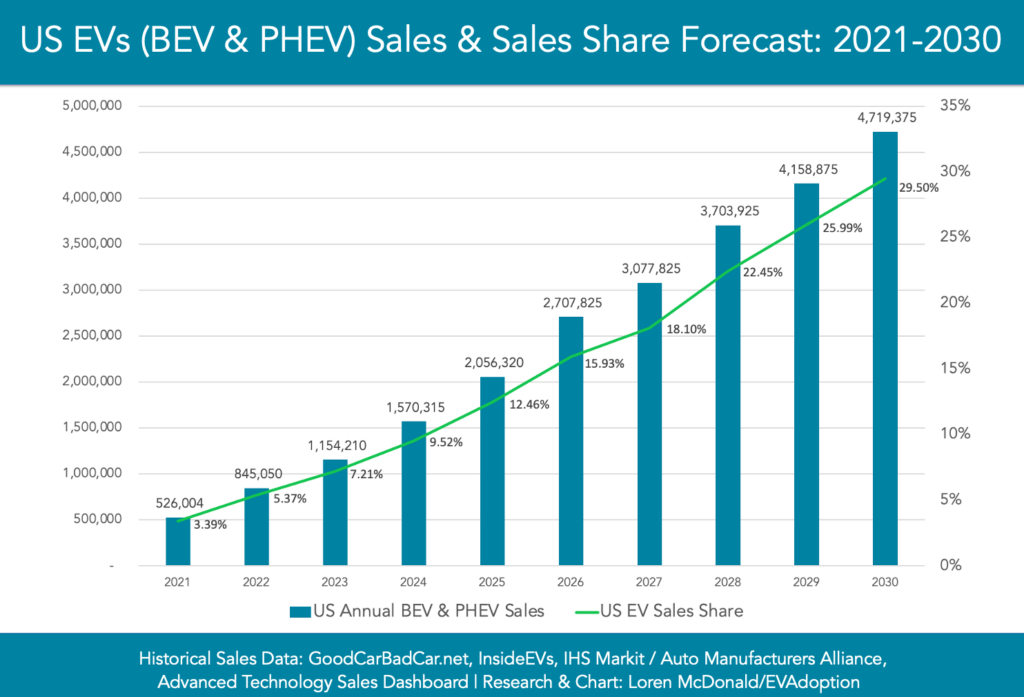Electric vehicle (EV) adoption is rising quickly. More than 18 to 25 million EVs are predicted to be on the road by 2030. More than 20% of all vehicle sales will be electric vehicles. Amongst other auto manufacturers, GM is aiming to produce ONLY EVs by 2035. EV’s have been around enough that there is a start to an EV charging infrastructure, but is it enough for the huge about of cars that will be hitting the road soon?
Commercial property owners are going to have to be part of the solution when it comes to charging infrastructure. Those that plan ahead will see benefits, while those who wait will probably see considerably higher costs.
By the Numbers
Million EVs on the Road by 2030
Get Plugged In
EV drivers will need places to charge, whether at home or out and about. About 80% of EV charging happens at home. While that may be well and good for single-family home and duplex residents, what about those who live in apartments or condos? (Frankly, even drivers who charge at home will have a tough time taking care of the newer cars with massive batteries.)
Investors, developers, and retailers will NEED to offer EV charging with some flexibility to remain attractive to potential residents and guests

Get Ready
How can property owners prepare for the EV future? Plan ahead: Keep in mind that it’s much cheaper to include EV charging capabilities in the construction phase vs. retrofitting. We’re talking 4-6 times more expensive to retrofit for EV charging capability than building with EV-ready in mind.
Code changes are already on the books in many locations, especially California, Colorado, and Washington. We expect those requirements to roll out across the country in the coming years. Properties will be required to designate and prepare for EV-ready parking to get permits.
Properties will save thousands of dollars per charging space by planning for EV charging at the beginning instead of waiting until they absolutely have to add charging.

What’s the Cost?
According to SWEEP:
The EV infrastructure costs may seem high, but the overall impact on building costs is low. An analysis done by the California Air Resources Board in 2018, examined the costs of adding EV Ready requirements for new multi-family developments. It found that adding panel capacity and conduit during new construction would add between 0.1% and 0.2% to the total building cost.
Property owners MUST plan for EV growth—international building code demands it. But there are also options to help offset the costs associated with an EV charging upgrade.
Creating Infrastructure
President Biden’s $1.2 trillion infrastructure bill recently passed the US House with billions of dollars for projects like repairing roads and building a nationwide network of EV charging stations. That includes $7.5 billion for creating the EV charging infrastructure, and $71 million for EV charging infrastructure in Washington State alone.
The dollars will come in the form of grants. Property owners exploring EV charging for their investment properties should investigate potential grant opportunities from local utilities and other organizations to help offset the costs of adding EV charging.
Most car manufacturers and even some countries have put target dates on when EV’s may be the only cars on the road. For those owners that means charging and a lot of it, and that amenity will be high in people’s minds when they choose which apartment, office or retail space to rent.
How Do You Do EVs?
Tell us how your property handles or is prepping for EV charging.




Recent Comments